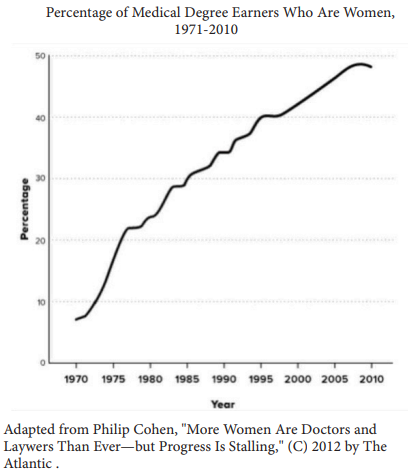Hi SAT Aspirants, welcome to AKVTutorials. As you know SAT (Scholastic Assessment Test) is a standard test, used for taking admission to undergraduate programs of universities or colleges of United States. SAT is developed and published by the College Board, an organization in United States, administered by the Educational Testing Service. Therefore, you need to do practice on SAT Reading Section, SAT Writing and Language Section. In this article, you will get SAT 2023 Reading and Writing Prep Test 76 with Answer Keys AMBIPi.
Instruction:
- In the passage below is accompanied by a number of questions.
- For some questions, you need to think how the passage might be revised to improve the expression of ideas.
- For other questions, you will consider how the passage might be edited to correct errors in sentence structure, usage, or punctuation.
- Some questions will direct you to an underlined portion of a passage.
- Other questions will direct you to a location in a passage or ask you to think about the passage as a whole.
SAT Writing & Language Section Passage
SAT Writing Passage Title: Mary Walker: A Century Ahead of Her Time
Dr. M. Edwards Walker was one of the bravest army surgeons during the American Civil War. In addition to working on the frontlines of the Union Army from 1863 to 1865, Walker was also a Union 1 spy. Who relayed Confederate secrets across enemy lines while treating civilians in the South. Walker was even captured by Confederate troops and held as a prisoner of war for four months, until eventually being released—along with two dozen other Union doctors—in exchange for seventeen Confederate surgeons. But what makes Dr. Walker’s story perhaps even more remarkable is that, unlike the other Army surgeons during the Civil War, Dr. Walker was a woman.
Dr. Mary Edwards Walker was born on November 26, 1832, in the town of Oswego, New York. Her father, a country doctor, was an active participant in many of the social reform movements of the mid-1800s; he encouraged all five of his daughters to pursue their education in spite of heavy social pressures and 2 prejudices against them. Mary, the youngest of the daughters, followed her father’s advice the most intently, becoming the second woman to receive a medical doctorate in the United States in 1855 at the young age of 21. 3
In recognition of her service to the Union Army during the Civil War, Walker was awarded the Medal of Honor in 1865. She was the first and only woman ever to receive the United States Army’s highest military honor. While her medal, along with the medals of 910 others, 4 were unfortunately taken away when Congress revised the Medal of Honor standards in 1917, an Army Board eventually reinstated Walker’s award posthumously, 5 reciting her “distinguished gallantry, self-sacrifice, patriotism, dedication; and unflinching loyalty to her country, despite the apparent discrimination because of her sex.”
6 To say that Mary Walker was born ahead of her time would be a vast understatement. From an early age, Walker refused to wear the long heavy 7 skirts and corsets that were traditionally designated for women 7 yet would instead wear a dress and trouser combination called the ‘Bloomer costume’ that provided for greater mobility. In 1866, Walker was even elected president of the National Dress Reform Association, and prided herself in being arrested numerous times for wearing full male attire, including 8 a winged-collar; bow-tie; and, top hat. Towards the end of her life, Walker went on to become involved in a number of other progressive movements in the United States, including the suffragette movement and the temperance movement.
9 Interestingly, though, while Walker was an outspoken proponent of the woman’s suffrage movement, she did not support the Nineteenth Amendment and instead argued that a woman’s right to vote was already contained in the United States Constitution. Though she was unaware of it at the time, Mary Edwards Walker was at the forefront of a monumental shift in the role of women in medicine. 10 Walker was not only a trailblazer in the medical 11 field, she was also a relentless visionary who bravely challenged many of the social prejudices of her day, and contributed as much to advancing gender equality in the United States as she did to healing injured soldiers during the Civil War.

SAT Writing & Language Practice Questions
SAT Writing Practice Test Question No 1
Which choice best maintains the sentence pattern already established in the paragraph?
Option A : No Change
Option B : spy, Walker relayed
Option C : spy, relaying
Option D : spy. Relaying
SAT Writing Practice Test Answer
Show/Hide Answer
Option C : Spy, relaying
SAT Writing Practice Test Question No 2
Which of the following options is the most effective?
Option A : No Change
Option B : dispositions
Option C : inclinations
Option D : predilections
SAT Writing Practice Test Answer
Show/Hide Answer
Option A : No Change
SAT Writing Practice Test Question No 3
At this point, the writer wants to conclude the second paragraph with a sentence that will effectively transition into the third paragraph. Which choice best accomplishes this goal?
Option A : Dr. Walker then proceeded to open a short-lived medical practice with her husband, who was also a physician, in rural Ohio
Option B : The first female to receive a medical doctorate in the United States was Elizabeth Blackwell, who graduated from Geneva Medical College in 1849
Option C : When Walker was a student in Hopkinton, Iowa, she was suspended from school for refusing to quit the then all male debating society.
Option D : After graduating from medical school, Dr. Walker decided to volunteer for the United States Army, despite being denied an official medical commission due to the fact that she was a woman.
SAT Writing Practice Test Answer
Show/Hide Answer
Option D : After graduating from medical school, Dr. Walker decided to volunteer for the United States Army, despite being denied an official medical commission due to the fact that she was a woman.
SAT Writing Practice Test Question No 4
Which choice results in the most effective transition to the information that follows in the paragraph?
Option A : No Change
Option B : was
Option C : being
Option D : is
SAT Writing Practice Test Answer
Show/Hide Answer
Option B : was
SAT Writing Practice Test Question No 5
Which choice best maintains the sentence pattern already established in the paragraph?
Option A : No Change
Option B : siting
Option C : citing
Option D : inciting
SAT Writing Practice Test Answer
Show/Hide Answer
Option C : citing
SAT Writing Practice Test Question No 6
Which choice most effectively establishes the main topic of the paragraph?
Option A : No Change
Option B : In addition to Walker’s military service, she was also an outspoken social reformer and advocate of women’s rights issues, particularly dress reform.
Option C : After Walker’s military service, she began to advocate for voting rights for women and African Americans in the United States
Option D : After the Civil War, Walker continued to practice medicine, working in a female prison in Louisville as well as an orphan’s asylum in Tennessee.
SAT Writing Practice Test Answer
Show/Hide Answer
Option B : In addition to Walker’s military service, she was also an outspoken social reformer and advocate of women’s rights issues, particularly dress reform.
SAT Writing Practice Test Question No 7
Which choice best maintains the sentence pattern already established in the paragraph?
Option A : No Change
Option B : although she
Option C : and
Option D : even though she
SAT Writing Practice Test Answer
Show/Hide Answer
Option C : and
SAT Writing Practice Test Question No 8
The writer is considering deleting the underlined sentence. Should the sentence be kept or deleted?
Option A : NO CHANGE
Option B : a winged collar, bow-tie; and top hat.
Option C :a winged collar; bow-tie, and top hat.
Option D : a winged collar, bow-tie, and top hat.
SAT Writing Practice Test Answer
Show/Hide Answer
Option D : a winged collar, bow-tie, and top hat.
SAT Writing Practice Test Question No 9
The writer is considering deleting the underlined sentence. Should the writer make this deletion?
Option A : Yes, because it contains information that is already provided earlier in the passage.
Option B : Yes, because it is unrelated to the paragraph’s argument that Walker was a female war hero.
Option C : No, because it provides an effective counterexample to the idea that Walker disagreed with many of her contemporaries.
Option D : No, because it supports the passage’s portrayal of Walker as a nonconventional figure and independent thinker.
SAT Writing Practice Test Answer
Show/Hide Answer
Option D : No, because it supports the passage’s portrayal of Walker as a nonconventional figure and independent thinker.
SAT Writing Practice Test Question No 10
At this point, the writer wants to add accurate information from the graph about the recent growth of women in medicine. Which choice best accomplishes this goal?
Option A : As of 2010, nearly 50 percent of all medical degree earners in the United States are women.
Option B : Between 1980 and 2010, the number of women earning medical degrees in the United States nearly tripled.
Option C : In 1975, the percentage of women earning medical degrees surpassed the percentage of women earning law degrees in the United States.
Option D : Since 2005, there have been more women than men earning medical degrees in the United States.
SAT Writing Practice Test Answer
Show/Hide Answer
Option A : As of 2010, nearly 50 percent of all medical degree earners in the United States are women.
SAT Writing Practice Test Question No 11
Which choice completes the sentence with accurate data based on the graph?
Option A : No Change
Option B : field she
Option C : field; she
Option D : field: she
SAT Writing Practice Test Answer
Show/Hide Answer
Option C : field; she



